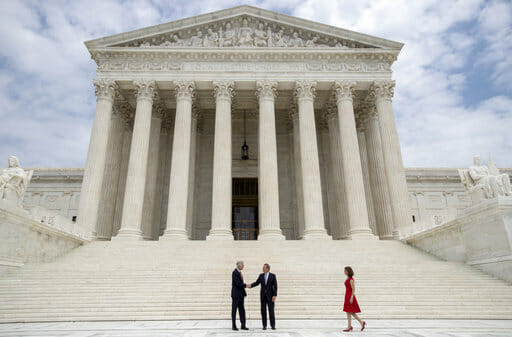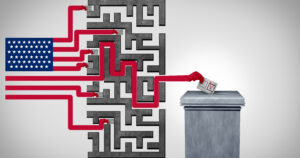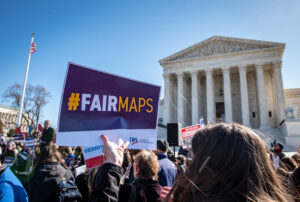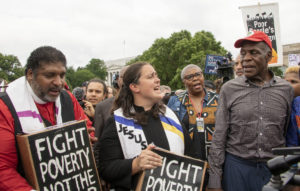Supreme Court Avoids Ruling on Two Partisan Gerrymandering Cases
It is a setback for those who hoped voting maps would be redrawn in time for the 2018 midterms. Supreme Court building. (J. Scott Applewhite / AP)
Supreme Court building. (J. Scott Applewhite / AP)
The results of the 2018 midterm elections hinge not only on obvious factors such as money, Donald Trump’s approval rating and even whether the Democrats can muster a compelling enough message for voters to usher in a “blue wave.” They’ll be determined by a less flashy, but perhaps even more critical, issue. Namely, much will hinge on how the maps of election districts are drawn, and whether they have been deliberately configured to favor one party over another—e.g., whether the practice of partisan gerrymandering is in effect.
On Monday, the Supreme Court had an opportunity to take a stand on whether drawing such maps along party lines is unconstitutional. The top court was presented with a pair of partisan gerrymandering cases, one involving a map purportedly favoring Republicans in Wisconsin, the other featuring a map that allegedly gave Democrats in Maryland an edge.
The justices avoided the issue, dismissing both challenges on technical grounds. In the process, the court “[turned] potential constitutional blockbusters into minor rulings,” as Adam Liptak writes in The New York Times.
Wisconsin had attempted to use a map of that state as a whole in arguing its case, Gill v. Whitford. The court said the challenges should instead be brought district by district and sent the case back to a trio of federal judges who will determine whether the challengers can modify their lawsuit with plaintiffs in each district.
Wisconsin Democrats, as a recent Politico article points out, are rebuilding their party after a sobering 2016 presidential election. To recap, the state went Republican for the first time since 1984, and Hillary Clinton caught heat for not campaigning in Wisconsin at all during the general election. Now, Politico reports, Democrats have already invested more than $7 million, opened multiple field offices and taken visits from rumored 2020 presidential hopefuls—including California Sen. Kamala Harris, South Bend, Ind., Mayor Pete Buttigieg and former Attorney General Eric Holder.
The Supreme Court decision doesn’t negate those efforts, but it certainly doesn’t help what was already an uphill battle.
The Maryland case, Benisek v. Lamone, was in a relatively early stage. As The Washington Post reports, SCOTUS’ nine justices said that “the lower court had not been wrong when it decided not to make the state redraw the maps in time for the 2018 election.”
In practice, this means that upcoming elections in both states will proceed using the current maps. There’s also a redistricting case out of North Carolina that could offer the justices the opportunity to make a firmer ruling, although it’s not clear if that case will be decided before November.
Even with opportunities for future challenges, the delay amounts to a loss for anyone hoping this decision would help eradicate partisan electoral maps in time for the midterms. As Chris Carson, president of the League of Women Voters of the United States, told The Washington Post, “Today’s decision is yet another delay in providing voters with the power they deserve in our democracy.”
Dig, Root, GrowThis year, we’re all on shaky ground, and the need for independent journalism has never been greater. A new administration is openly attacking free press — and the stakes couldn’t be higher.
Your support is more than a donation. It helps us dig deeper into hidden truths, root out corruption and misinformation, and grow an informed, resilient community.
Independent journalism like Truthdig doesn't just report the news — it helps cultivate a better future.
Your tax-deductible gift powers fearless reporting and uncompromising analysis. Together, we can protect democracy and expose the stories that must be told.
This spring, stand with our journalists.
Dig. Root. Grow. Cultivate a better future.
Donate today.








You need to be a supporter to comment.
There are currently no responses to this article.
Be the first to respond.